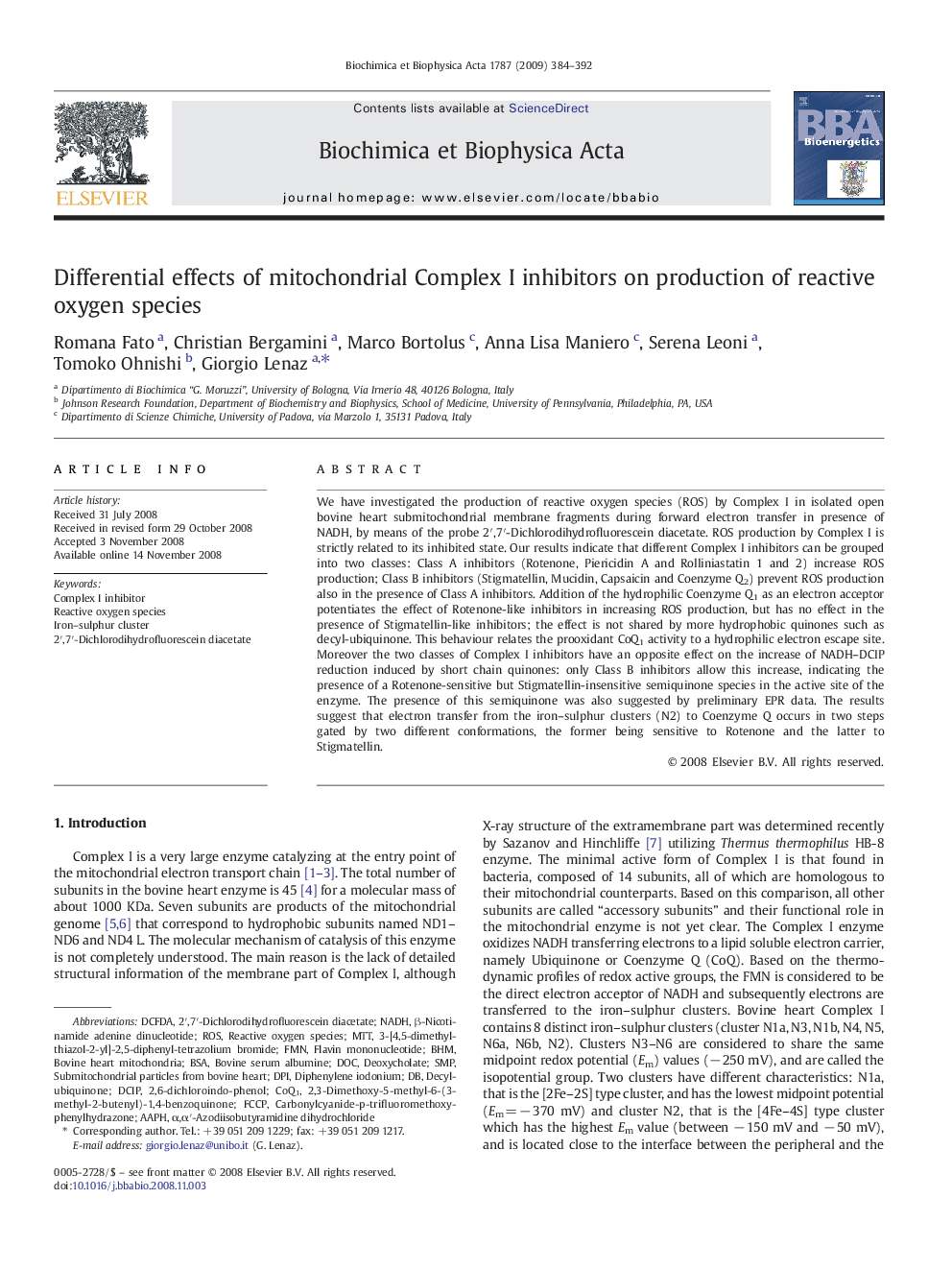| کد مقاله | کد نشریه | سال انتشار | مقاله انگلیسی | نسخه تمام متن |
|---|---|---|---|---|
| 10796009 | 1052649 | 2009 | 9 صفحه PDF | دانلود رایگان |
عنوان انگلیسی مقاله ISI
Differential effects of mitochondrial Complex I inhibitors on production of reactive oxygen species
دانلود مقاله + سفارش ترجمه
دانلود مقاله ISI انگلیسی
رایگان برای ایرانیان
کلمات کلیدی
DCFDA2,3-dimethoxy-5-methyl-6-(3-methyl-2-butenyl)-1,4-benzoquinoneComplex I inhibitorBHMCoQ1DCIPDPIFCCPAAPHFMNDOC2′,7′-dichlorodihydrofluorescein diacetate - 2 '، 7'-dichlorodihydrofluorescein diacetateBSA - BSAMTT - MTTROS - ROSβ-nicotinamide adenine dinucleotide - β-نیکوتین آمید آدنین دینوکلئوتیدbovine serum albumine - آلبومین سرم گاوIron–sulphur cluster - خوشه آهن گوگردSMP - دانشکده دبیرستانdeoxycholate - دگزیکسولاتdiphenylene iodonium - دیوفنیلن یدونیومflavin mononucleotide - فلاون مونونوکلئوتیدBovine heart mitochondria - میتوکندری قلب گاوNADH - نادانcarbonylcyanide-p-trifluoromethoxyphenylhydrazone - کربونیل سایانیید-پتروفورورمتوکسفنیل هیدرازونReactive oxygen species - گونههای فعال اکسیژن
موضوعات مرتبط
علوم زیستی و بیوفناوری
علوم کشاورزی و بیولوژیک
دانش گیاه شناسی
پیش نمایش صفحه اول مقاله

چکیده انگلیسی
We have investigated the production of reactive oxygen species (ROS) by Complex I in isolated open bovine heart submitochondrial membrane fragments during forward electron transfer in presence of NADH, by means of the probe 2â²,7â²-Dichlorodihydrofluorescein diacetate. ROS production by Complex I is strictly related to its inhibited state. Our results indicate that different Complex I inhibitors can be grouped into two classes: Class A inhibitors (Rotenone, Piericidin A and Rolliniastatin 1 and 2) increase ROS production; Class B inhibitors (Stigmatellin, Mucidin, Capsaicin and Coenzyme Q2) prevent ROS production also in the presence of Class A inhibitors. Addition of the hydrophilic Coenzyme Q1 as an electron acceptor potentiates the effect of Rotenone-like inhibitors in increasing ROS production, but has no effect in the presence of Stigmatellin-like inhibitors; the effect is not shared by more hydrophobic quinones such as decyl-ubiquinone. This behaviour relates the prooxidant CoQ1 activity to a hydrophilic electron escape site. Moreover the two classes of Complex I inhibitors have an opposite effect on the increase of NADH-DCIP reduction induced by short chain quinones: only Class B inhibitors allow this increase, indicating the presence of a Rotenone-sensitive but Stigmatellin-insensitive semiquinone species in the active site of the enzyme. The presence of this semiquinone was also suggested by preliminary EPR data. The results suggest that electron transfer from the iron-sulphur clusters (N2) to Coenzyme Q occurs in two steps gated by two different conformations, the former being sensitive to Rotenone and the latter to Stigmatellin.
ناشر
Database: Elsevier - ScienceDirect (ساینس دایرکت)
Journal: Biochimica et Biophysica Acta (BBA) - Bioenergetics - Volume 1787, Issue 5, May 2009, Pages 384-392
Journal: Biochimica et Biophysica Acta (BBA) - Bioenergetics - Volume 1787, Issue 5, May 2009, Pages 384-392
نویسندگان
Romana Fato, Christian Bergamini, Marco Bortolus, Anna Lisa Maniero, Serena Leoni, Tomoko Ohnishi, Giorgio Lenaz,